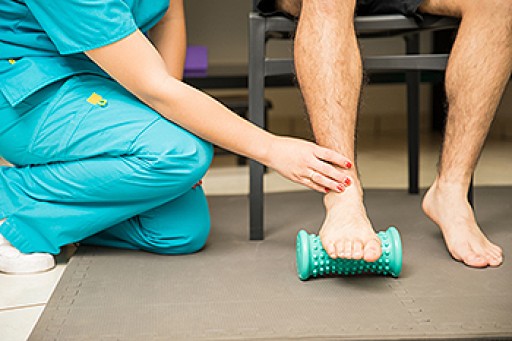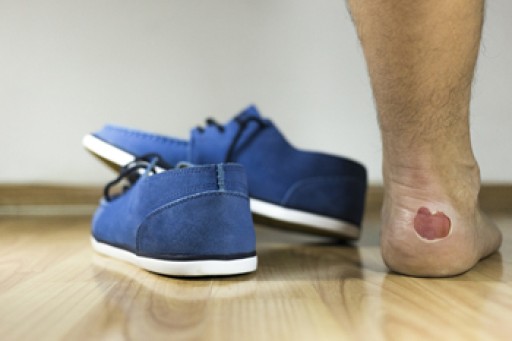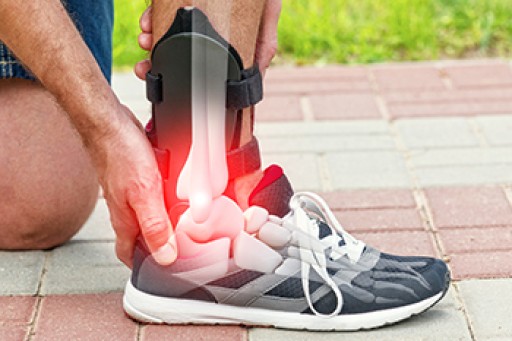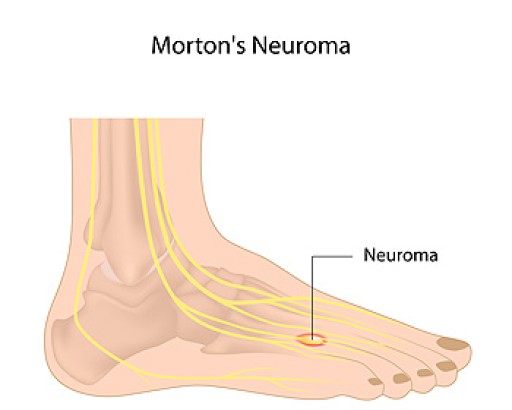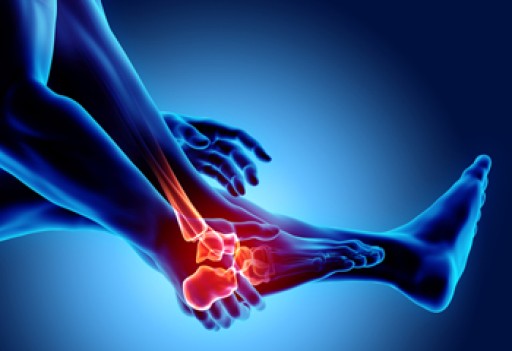
Heel pain is experienced by many people. The foot condition known as plantar fasciitis is a leading cause of heel pain and it can be uncomfortable. The plantar fascia is a band of tissue that is located on the bottom of the foot and connects the heel to the toes. If this becomes inflamed for any reason, it could result in plantar fasciitis. Plantar fasciitis can happen from standing on hard surfaces for long periods throughout the day, or from wearing shoes that do not fit correctly. Additionally, it may occur in people who frequently participate in running and jumping activities, as this may put excess stress on the heel of the foot. The symptoms that are often associated with plantar fasciitis can include heel pain that is worse upon arising in the morning and often feels like a stabbing or shooting pain. This condition may be more prevalent among people who are over 50 years old, overweight, or who have high arches or tight calf muscles. Treatment methods may include wearing orthotics, performing specific types of stretches, or in severe cases, surgery may be necessary. If you have heel pain, please consult with a podiatrist who can effectively diagnose and treat plantar fasciitis.
Plantar fasciitis is a common foot condition that is often caused by a strain injury. If you are experiencing heel pain or symptoms of plantar fasciitis, contact one of our podiatrists from Illinois . Our doctors can provide the care you need to keep you pain-free and on your feet.
What Is Plantar Fasciitis?
Plantar fasciitis is one of the most common causes of heel pain. The plantar fascia is a ligament that connects your heel to the front of your foot. When this ligament becomes inflamed, plantar fasciitis is the result. If you have plantar fasciitis you will have a stabbing pain that usually occurs with your first steps in the morning. As the day progresses and you walk around more, this pain will start to disappear, but it will return after long periods of standing or sitting.
What Causes Plantar Fasciitis?
- Excessive running
- Having high arches in your feet
- Other foot issues such as flat feet
- Pregnancy (due to the sudden weight gain)
- Being on your feet very often
There are some risk factors that may make you more likely to develop plantar fasciitis compared to others. The condition most commonly affects adults between the ages of 40 and 60. It also tends to affect people who are obese because the extra pounds result in extra stress being placed on the plantar fascia.
Prevention
- Take good care of your feet – Wear shoes that have good arch support and heel cushioning.
- Maintain a healthy weight
- If you are a runner, alternate running with other sports that won’t cause heel pain
There are a variety of treatment options available for plantar fasciitis along with the pain that accompanies it. Additionally, physical therapy is a very important component in the treatment process. It is important that you meet with your podiatrist to determine which treatment option is best for you.
If you have any questions, please feel free to contact our offices located in Wheeling and Berwyn, IL . We offer the newest diagnostic and treatment technologies for all your foot care needs.
